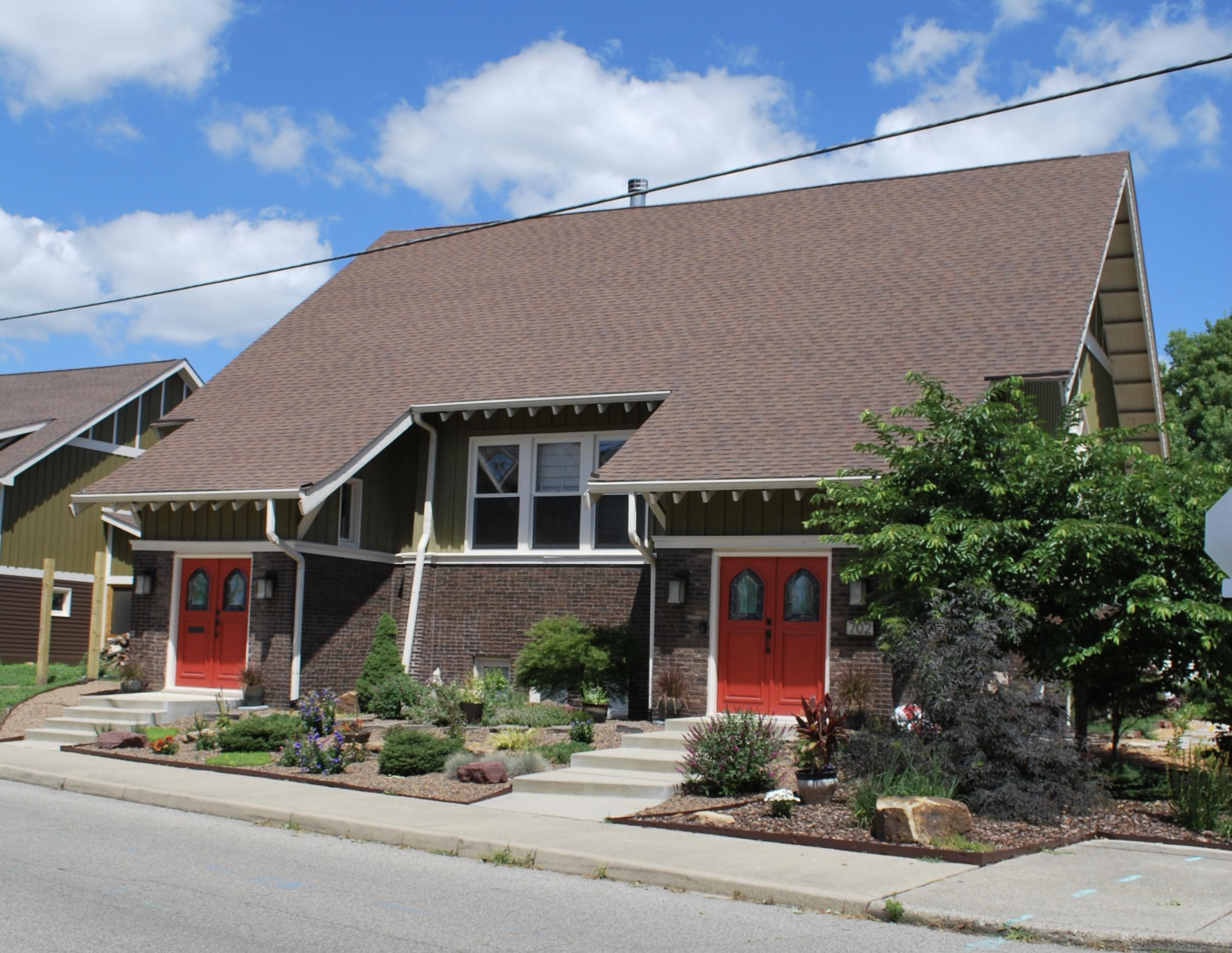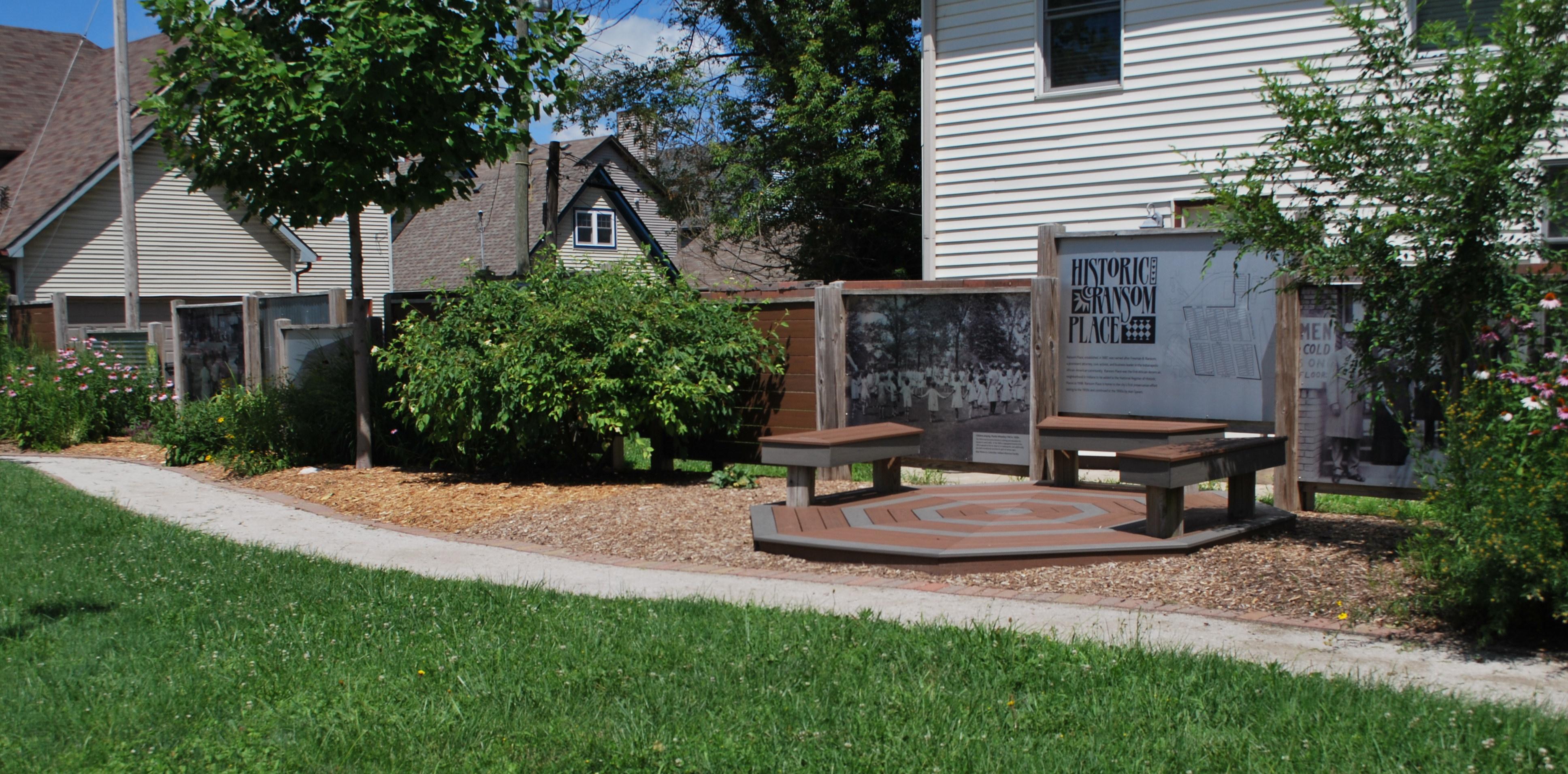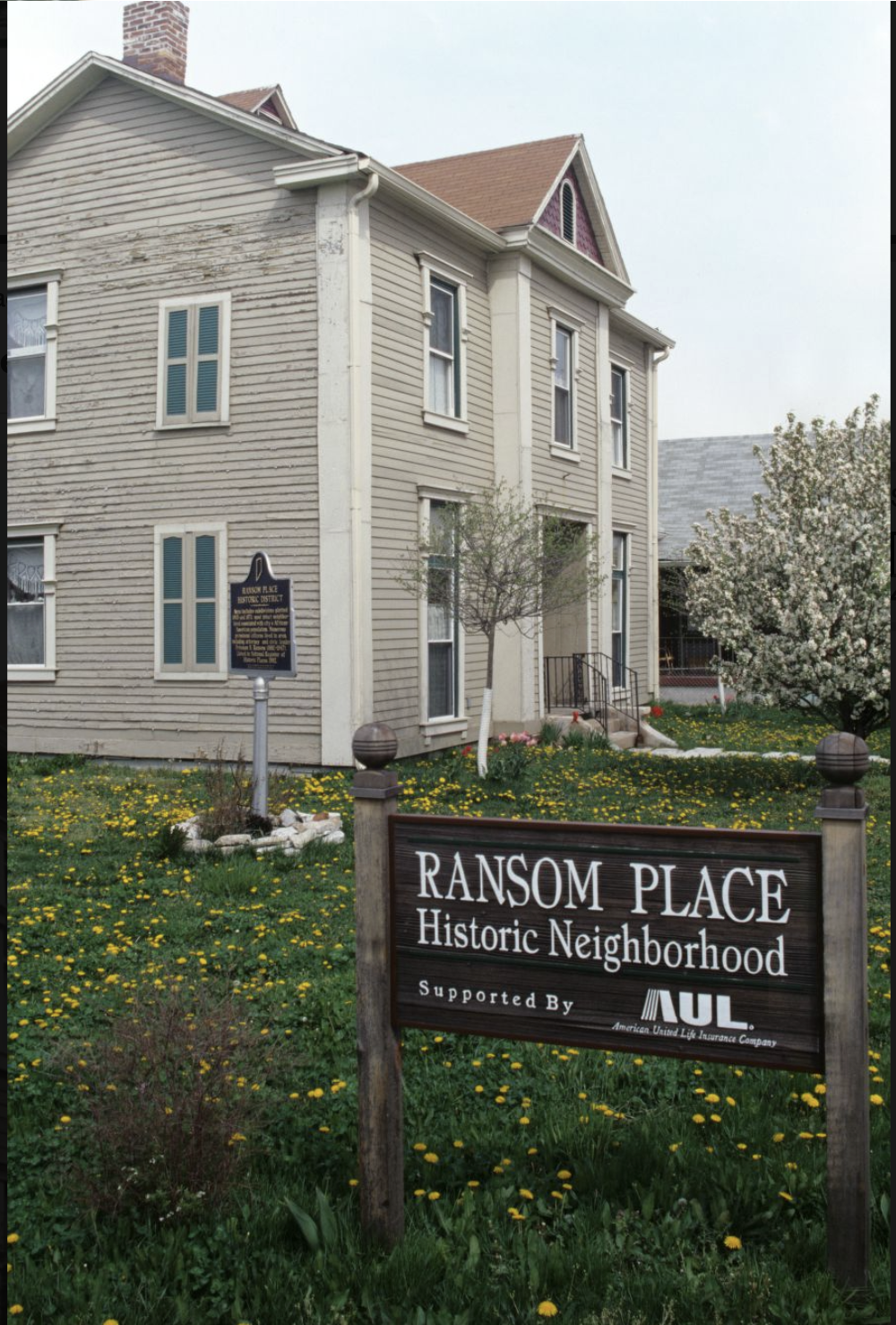Ransom Place is a historic African American neighborhood bounded by 10th Street to the North, St. Clair Street to the South, Paca Street to the East, and Dr. Martin Luther King Jr. Street to the West. Located in a six-square block northwest of downtown Indianapolis, Ransom Place represents the remnants of a once larger African American community. The neighborhood originally resided within a combination of lots platted by John Meikel in 1865 and William Y. Wiley in 1871.

Ransom Place’s development flourished during the 1880s and 1890s. Homes were of modest vernacular styles, mostly one-story frame houses, but included some shotgun and larger-scale dwellings as well.
The growth of Ransom Place coincided with the emergence of as the central commercial and leisure district for Indianapolis’ Black community. Located one block from the neighborhood, Indiana Avenue featured various Black-owned establishments, including churches, clubs, community centers, restaurants, shops, and theatres. This change was partially the result of white residents moving to other parts of the city after an influx of Black southern migrants came into the area.
While most of these new arrivals in and around Indiana Avenue were employed as domestics or unskilled laborers, many of Ransom Place’s Black residents had prominent and well-established careers. Select occupations included physicians, attorneys, and even a city councilman.
In 1945, the newly formed Indianapolis Redevelopment Commission designated Ransom Place as one of the city’s first rehabilitation areas. Residents used this status to construct new homes in the neighborhood. This construction continued until the area was fully developed around 1950.
During this same period, Indiana Avenue was in the midst of a decline. Many of the area’s more upwardly mobile Black residents were moving to other parts of the city as local segregation laws were relaxed. Several Ransom Place inhabitants were part of this exodus as well. Indiana Avenue and its surrounding neighborhoods quickly fell into disrepair as a result of this change. Instead of rehabilitation, many of the area’s properties were razed by the city as a form of “blight-remediation” and “slum clearance.”
Starting in the 1960s, city leaders worked with to systematically acquire and demolish hundreds of properties in the area for the campus’ expansion. While some of these buildings were abandoned, others were the long-time homes and businesses of Black residents still living in Ransom Place, Indiana Avenue, and surrounding neighborhoods. Such expansion practices continued into the 1970s and 1980s.

After a couple of decades of decline, Ransom Place entered a period of revitalization when preservationist Jean Spears moved into the neighborhood in 1987. Four years after her arrival, Spears founded the Ransom Place Neighborhood Association (RPNA) with fellow residents Lathan Frayser, Addie Jones, Wilma Bailey, Mary Frisby, and Teresa Crawford-Cottingham. The nonprofit was created to encourage the area’s preservation as well as the promotion of its history.
Ransom Place was not used to identify this neighborhood until the creation of RPNA on August 19, 1991. The name was chosen to honor , an attorney, and general manager for the company who lived on California Street.

In 1992, Ransom Place was listed on the National Register of Historic Places (NRHP). After this designation, the neighborhood benefited from repaired historic homes and the construction of new houses on previously vacant lots. Twenty-two new homes were built on the eastside of Paca Street alone between 1996 and 1997. These revitalization efforts contributed to the neighborhood’s classification as an Indianapolis conservation district (neighborhoods whose “distinctive character [is] significant to the culture, heritage, history, and development of the community”) in 1992 (See ) in 1992.
Since the start of the 21st century, Ransom Place Historic District has experienced a gradual change in the neighborhood’s demographics. The area is more diverse in terms of racial backgrounds as well as income levels. This shift is a result of IUPUI’s continued expansion as well as the ongoing redevelopment of Indiana Avenue.

Help improve this entry
Contribute information, offer corrections, suggest images.
You can also recommend new entries related to this topic.
